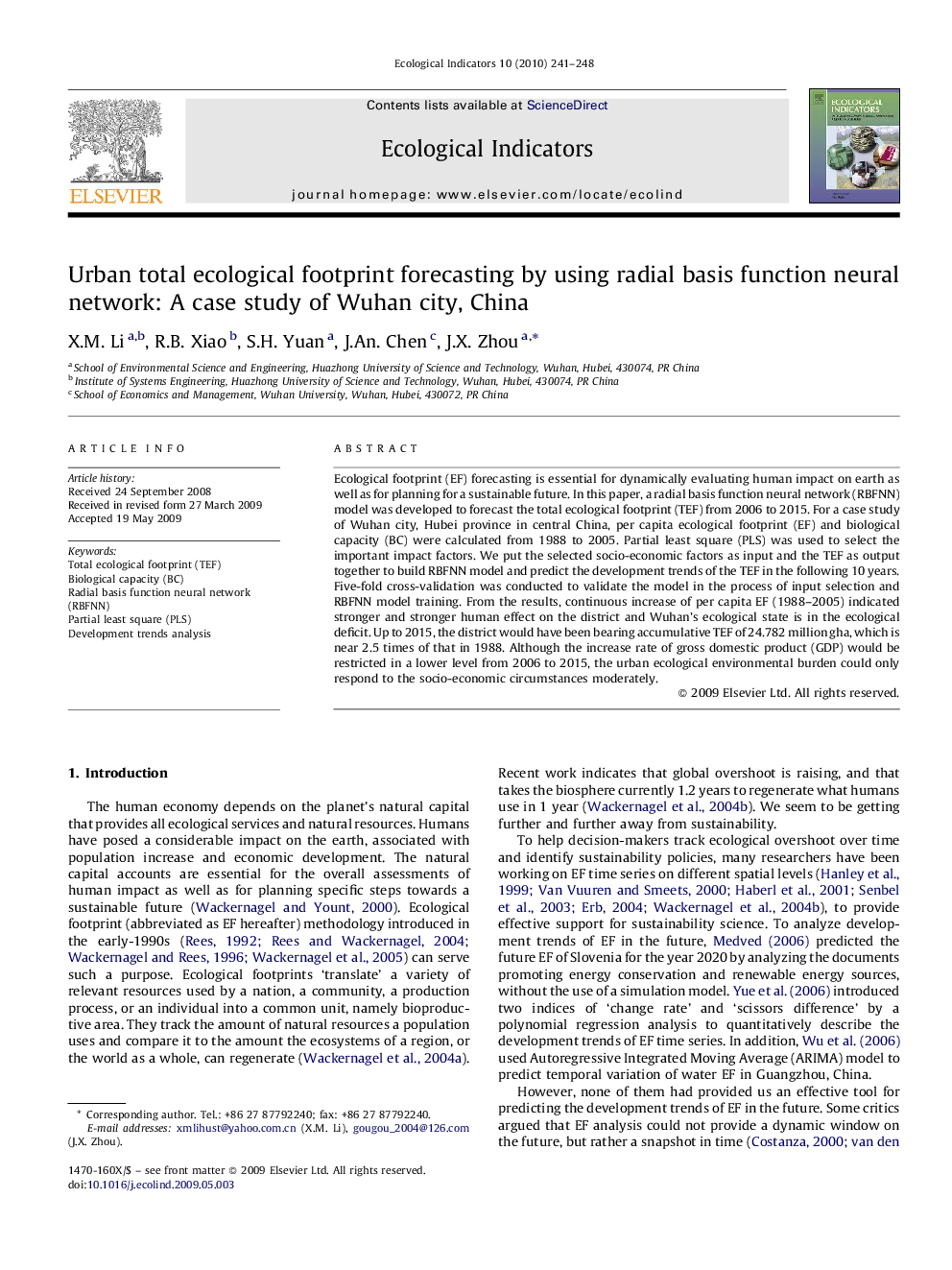| Article ID | Journal | Published Year | Pages | File Type |
|---|---|---|---|---|
| 4374279 | Ecological Indicators | 2010 | 8 Pages |
Ecological footprint (EF) forecasting is essential for dynamically evaluating human impact on earth as well as for planning for a sustainable future. In this paper, a radial basis function neural network (RBFNN) model was developed to forecast the total ecological footprint (TEF) from 2006 to 2015. For a case study of Wuhan city, Hubei province in central China, per capita ecological footprint (EF) and biological capacity (BC) were calculated from 1988 to 2005. Partial least square (PLS) was used to select the important impact factors. We put the selected socio-economic factors as input and the TEF as output together to build RBFNN model and predict the development trends of the TEF in the following 10 years. Five-fold cross-validation was conducted to validate the model in the process of input selection and RBFNN model training. From the results, continuous increase of per capita EF (1988–2005) indicated stronger and stronger human effect on the district and Wuhan's ecological state is in the ecological deficit. Up to 2015, the district would have been bearing accumulative TEF of 24.782 million gha, which is near 2.5 times of that in 1988. Although the increase rate of gross domestic product (GDP) would be restricted in a lower level from 2006 to 2015, the urban ecological environmental burden could only respond to the socio-economic circumstances moderately.
